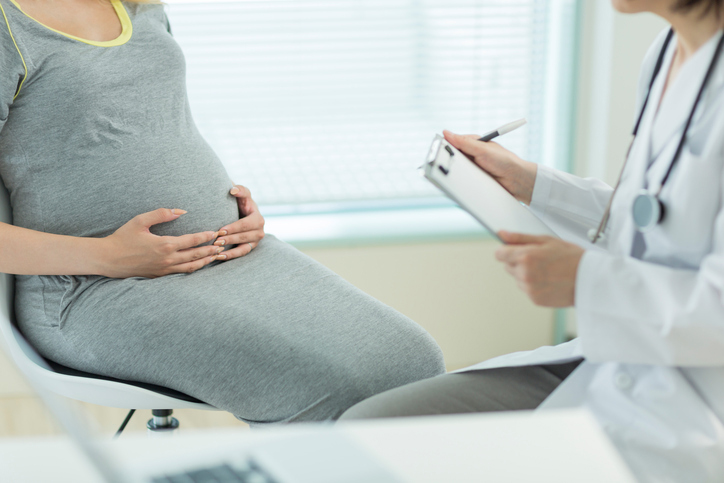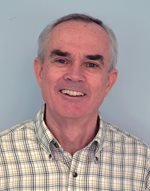1/16/2017

Name: Krisztina Hanley, M.D.
Hometown: Originally from Hungary and now lives in Decatur, Georgia
Family: Husband, Jim, and daughters, Aideen, 6, and Maeve, 3
Occupation: Assistant professor of Pathology & Laboratory Medicine, medical director of macroscopy and gross rooms, Emory University Hospital and Emory University Hospital at Midtown, rotation director of Gynecologic Pathology, Emory University Hospital.
Education: M.D. from University of Pecs in Hungary (2001), AP/CP residency at University of Rochester Medical Center (2003-2007), Cytopathology Fellow; Emory University School of Medicine (2007-2008), Gynecologic Pathology Fellow; University of Virginia (2008-2009).
Current research: A phase II clinical trial examining an agent that targets folate receptor alpha. She is also working with residents on a project that’s looking at certain pathways that might be connected to a certain pattern of invasion in endometrial cancer. Finally, she is researching a marker called OTP that can distinguish pulmonary versus non-pulmonary well-differentiated neuroendocrine tumors.
What first brought you to the U.S?
My husband is from Rochester and we met when I was still in medical school (in Hungary). It was a long-distance relationship. We wanted to live in same city so that’s what brought me to Rochester. We got married when I was a first-year resident in 2003.
Now you work at Emory in Atlanta, GA, where you completed a fellowship after residency. What aspects of that program made it attractive to you?
At Emory, the cytology fellowship is unique because we see a lot of patients. We have a clinic where we do fine needle aspirations. We perform the FNA ourselves, look at it, and talk to the patient. Sometimes we tell them the results right away. It’s very unique that as pathologist we actually see patients.
A lot of people think pathologists just sit in their office and look at slides or do autopsies in the basement. We actually do see patients. Also, the FNA clinic is in the cancer center (Winship Cancer Institute) which gives us the chance to have a very close relationship with the clinicians, the oncologists.
When you reflect on your time as a resident, what do you think has prepared you most for your career?
In retrospect, there are things I am glad I did even though I may not have liked them at the time. For example, in the gross room we were really busy with gross specimens. I remember very heavy days that made me miserable! I’m glad because even now after many years, I can still handle most of the specimens without any problems. I became very efficient. That’s also true with autopsies. We had a lot of autopsies at UR compared to other programs, and I think that really helped me get through things even when it gets really busy. I don’t freak out anymore.
For frozen sections it was the same way. We used to cut our own sections at UR. At Emory, they have a lot of help from PAs. I’ve been out of training for seven years now and I don’t have a problem cutting a frozen section. This is huge because when residents aren’t available or we have multiple frozen sections in the same time, I can help out.
Did you have any mentors during your time at URMC?
A few people had a major impact on me and the way I approach things: Dr. Thomas Bonfiglio who is retired, Dr. Ellen Giampoli, and Dr. James Powers. From a clinical pathology (CP) side, there was Dr. Marilyn Menegus, Dr. Neil Blumberg, and Nedda Howk from the Blood Bank. I don’t do hematopathology but I can thank (the late) Dr. Ray Felgar and Dr. Arnaldo Arbini for everything I know in hematopathology. The cytotechnologists at UR are outstanding. They are very engaged in resident education. Michael Facik, Donna Russell, and Mary Ann Rutkowski had major impact in my training in cytopathology and fellowship choice.
How do you like to spend your free time?
I love to bake. I cut back on that because my husband and I end up having to eat everything or it goes to waste, since my kids may or may not like what I bake. I started running after my older daughter was born. In Georgia you can run or hike outdoors pretty much the whole year, so we have hiking sticks for the girls and try to spend as much time outdoors as we can.
What do you think it’s going to take to draw more young people to the field of pathology?
I think they need to get early exposure. Exposure in medical school is very limited and there’s a lack of understanding for what pathologists actually do. So, we need to reach out to medical students and allow them to have hand on experience in our department. This could be sign out, gross room activities, participate in frozen sections, attend tumor boards and come to FNA clinic. Most people, including physicians from other specialties, have no idea how diverse and complex the work of a pathologist is.
1/4/2017
Pregnancy can be an anxious time for women, especially those who may be at higher risk for certain complications.
 UR Medicine offers prenatal testing for expecting mothers at the Biochemical Genetics Laboratory at Strong Memorial Hospital.
UR Medicine offers prenatal testing for expecting mothers at the Biochemical Genetics Laboratory at Strong Memorial Hospital.
Together with Department of Obstetrics and Gynecology, this team of clinical professionals helps provide families with answers to crucial questions before a baby is born.
How it Works
In New York State, all pregnant women in their first trimester are offered an optional blood test to screen for certain fetal defects. The patient’s OBGYN can order the test and have her sample sent to the laboratory.
From there, a team of medical technologists process the sample on an automated lab instrument that issues a report with the odds of certain complications. These results go to the ordering physician within 24 hours.
The first trimester maternal serum screening test assesses the risk for chromosomal defects – Down syndrome and Trisomy 18 – by combining the blood test result with a specific ultrasound measurement. Expecting mothers can later have a second trimester AFP only screening for spina bifida.
If the first screen comes back negative, no further testing is required. If the result is positive, patients are directed to a prenatal counselor who meets with them to take a more in-depth look.
The risk level depends on a number of factors including age, ethnicity and family history. While the first trimester screening provides an assessment of the risk, it is still too early to determine a diagnosis.

Jeanne Peterson
Jeanne Peterson is a reproductive genetics counselor at URMC who has spent more than 30 years consulting families facing possible or likely issues during pregnancy.
The vast majority of positive screens in the first trimester are actually false positives, she explains. Still, parents are often alarmed when they hear there is a higher-than-average risk of something going wrong.
“Once the patient gets that phone call from their doctor that they weren’t expecting, this cloud comes over them,” said Peterson. “Many times they’re not getting all the information about the results, and even the information they’re getting they might not understand very well.”
For example, an expecting mother with a 1 in 200 chance (0.5 percent) of having a baby with a birth defect is at much lower risk than someone with a 1 in 6 chance. By learning about their test results and what the numbers mean, many walk out the door feeling reassured and prepared for next steps, whatever they may be.
“You have to help people through it,” said Peterson. “You have to empower them by giving them information at the level they can understand.”
Higher risk individuals with a positive first screen can decide whether to have optional follow up testing for chromosomal abnormalities.
Advances in the last decade have provided a less invasive option than the traditional procedures, explains Dr. Robert Mooney, director of the Biochemical Genetics Laboratory at URMC.
Patients used to be limited to amniocentesis – a test that samples the amniotic fluid around the fetus – or CVS – which requires a small sample of the placenta early in pregnancy – to get a definitive diagnosis. Today, there is a less invasive option that often eliminates the need for more invasive procedures.

Robert Mooney, Ph.D.
The cell-free fetal DNA blood test is available for mothers as early as 10 weeks of gestation. This test analyzes genetic material from the placenta that is present in a woman's blood during pregnancy. It can accurately eliminate most false positives and identify those pregnancies with a high risk of an abnormality.
“This has really taken over as the next step after we identify a screen positive,” said Dr. Mooney. “In most cases this eliminates the false positives and identifies those who are at very high risk. We’ve now narrowed the population down to a few at very high risk rather than 3 to 5 percent who have screened positive by our (first trimester) blood test.”
Patients who still test positive after the cell-free DNA test can then choose to have amniocentesis or CVS to obtain a definitive diagnosis.
A Team Effort
The prenatal screening program at URMC is a combined effort of the Department of Obstetrics and Gynecology and the Biochemical Genetics Laboratory. Representatives from both areas meet regularly to review individual cases, changes to testing, or population trends.
“We’re part of a team,” said Dr. Mooney. “Prenatal Screening is successful only because we all work together. We communicate (with OBGYN) constantly and they give us information to help us interpret the results appropriately.”
The lab considers each test to represent a person and a family waiting anxiously for answers. The team operates on the presumption that every single result is important, says lab supervisor, Matthew Morriss.
“Each sample is unique,” he said. “It has a person at the end of it and we treat each one with the same urgency. These results are important and we want the doctor and the patient to have all the information that we can give them.”
As a counselor, Peterson says she finds it rewarding to help expecting parents be better prepared for the next step of their journey.
“I tell them that most babies born to all couples are healthy and normal and most likely this baby is healthy and normal, too,” said Peterson. “These screening tests sometimes create bumps in the road but the majority of the times, things turn out okay.”